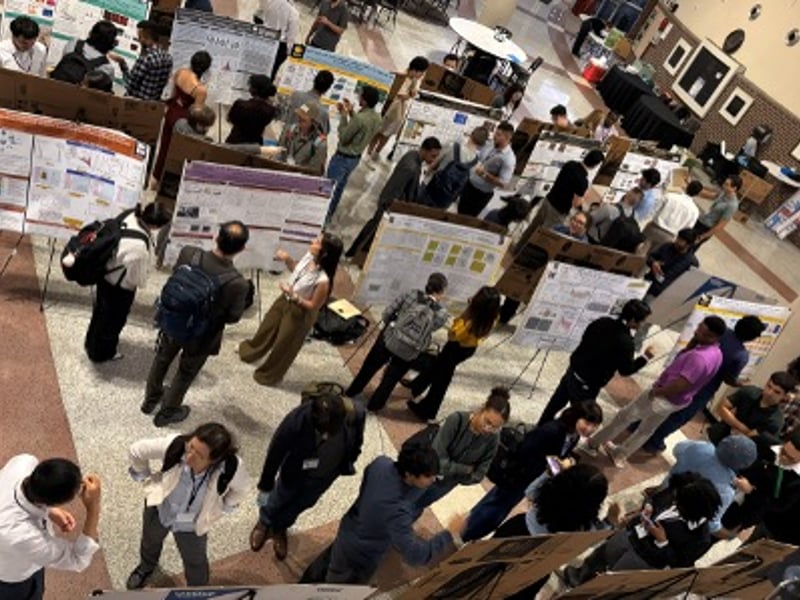Explore PREM News

STEMS 25 Brings Emerging Materials Research and Career Development to the University of Central Florida
The PREM Center for Quantum Materials Innovation and Educational Excellence recently organized the Science and Technology of Emerging Materials Symposium at the University of Cnetral Florida.

PREM CIMA Faculty Welcomed Into National Academy of Inventors
Earlier this year, two PREM CIMA faculty from Texas State University, Tania Betancourt and Sean Kerwin, were welcomed into the National Academy of Inventors (NAI) as part of the 2025 Class of Senior Members.

PREM Team Attends American Vacuum Society Symposium
PREM Web Team
In late September, members of the NSF-funded Partnership for Research and Education in Advanced Materials (PREM) Center, Collaborative Research and Education in Advanced Materials (CREAM), and the DOE-funded Center for Electrochemical Dynamics and Reactions on Surfaces (CEDARS) attended the 71st American Vacuum Society International Symposium and Exhibition in Charlotte, North Carolina, where they presented their research.

New Water Sensor Detects Toxic Iron Pollution with Extreme Sensitivity
PREM Web Team
A team of researchers from the U.S. and India has developed a powerful new sensor that can identify dangerous levels of iron in water faster, cheaper, and with far greater accuracy than existing methods. The project was led by Fei Yan, professor at North Carolina Central University (NCCU). Yan is also part of the NSF PREM for Hybrid Nanoscale Systems.

Texas State University Student Wins Prestigious Goldwater Scholarship
By Lane G Fortenberry, Texas State University
A Texas State University undergraduate student has been awarded a Barry Goldwater Scholarship, one of the nation’s most prestigious awards for future scientists, mathematicians, and engineers.

CAMPS 2025: A Student-Driven Showcase of Innovation, Community, and Future Leadership in Materials Science
PREM Web Team
In May, close to 100 students from 26 institutions across the United States came together in San Marcos, Texas for the CAMPS 2025 conference. More than just a scientific meeting, CAMPS—short for Conference Across MRSEC and PREM Schools—has carved out a unique identify as a conference organized by students, for students.

PREM Researchers Use Laser Deposition to Craft Reflective, High-Performance Films
PREM Web Team
PREM researchers at North Carolina A&T State University (NCAT) and the University of California at San Diego recently created thin films of titanium oxynitride (TiNO)—a material with excellent optical and light-manipulating (plasmonic) properties—using a method where a laser pulses to deposit the material in a vacuum.

Lights, Camera, Energy!
By Divya Abhat
Each year, nearly 8,000 school-age kids watch PREM researchers at the University of Texas at Rio Grande Valley (UTRGV) deliver awe-inspiring performances: a race between two people to lift a one-ton weight, gummy bears that burst loudly into flames, giant pendulums or wrecking balls swinging dangerously close to the face, and dance—so much dance.

Texas State PREM Brings Science to Life at S.T.E.A.M Fair
On April 5, TXST PREM took part in the 2025 San Marcos S.T.E.A.M. Fair. The PREM team of 13 student volunteers hosted interactive STEM activities that brought hands-on science to life for hundreds of kids and families at San Marcos High School.

Texas State University Participates in the 2025 MRSEC Annual Meeting and Industry Day
In early March, Texas State University PREM CIMA took part in the 2025 MRSEC Annual Meeting & Industry Day. Fourteen TXST PREM CIMA students delivered exciting research in one-minute pitches and poster presentations—a valuable opportunity for center researchers to share their work and connect with students, postdocs, and industry professionals from both UT Austin and the Northern Arizona University PREM.